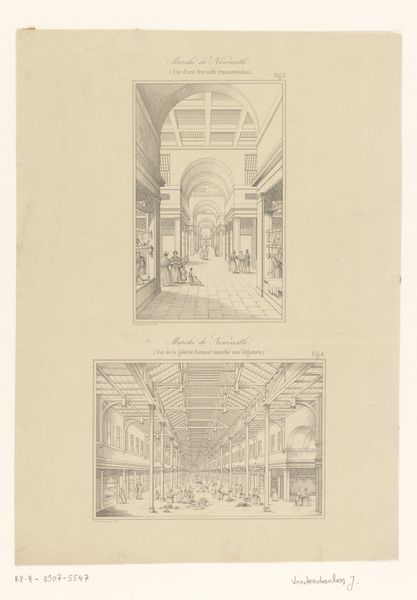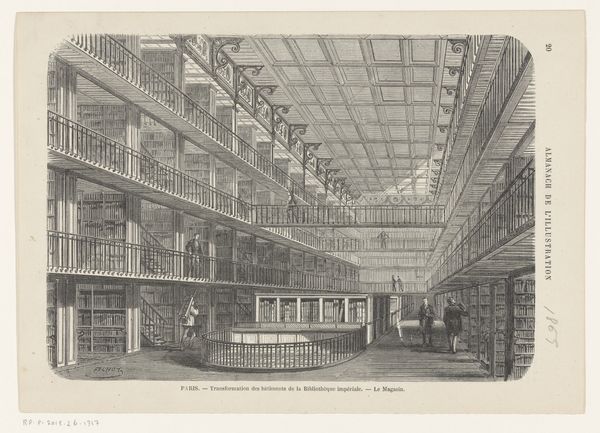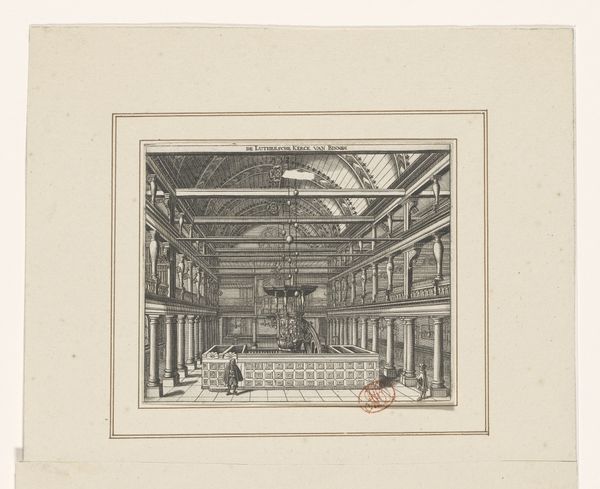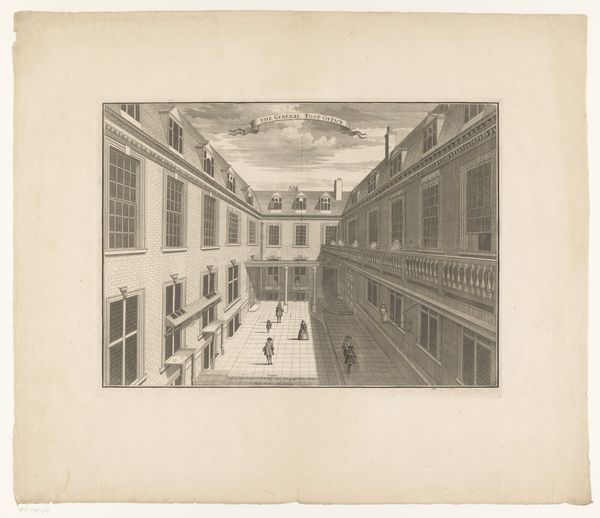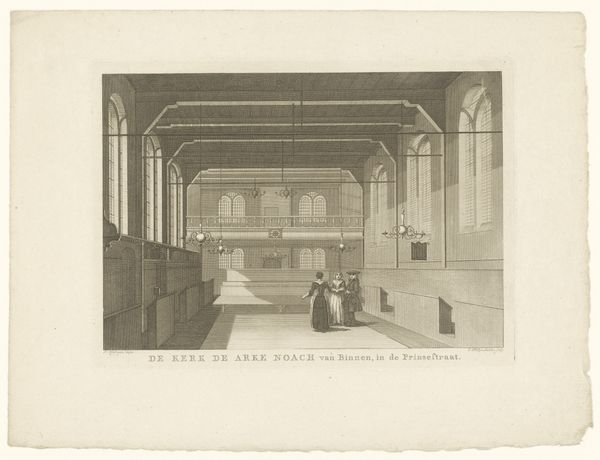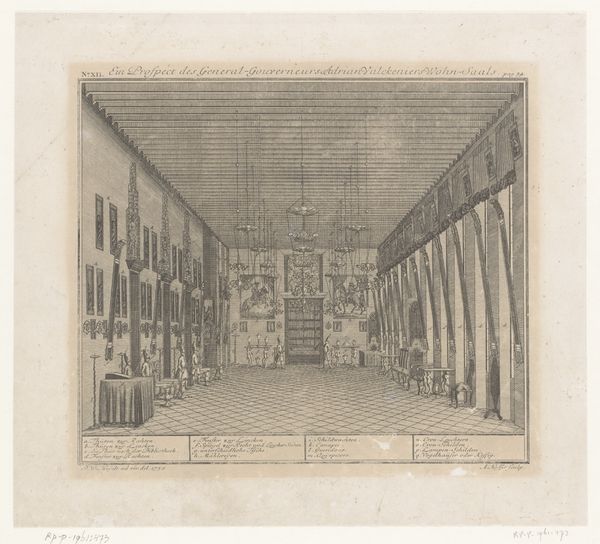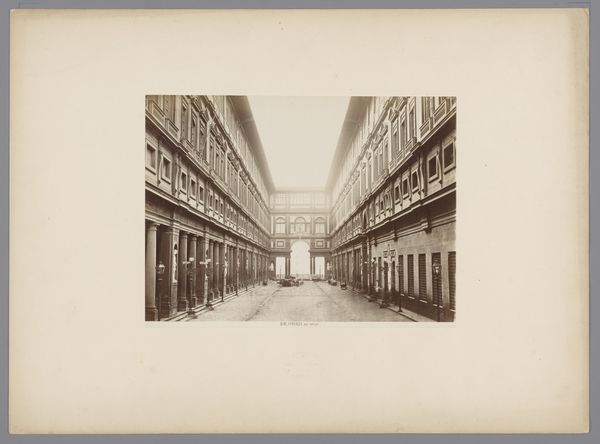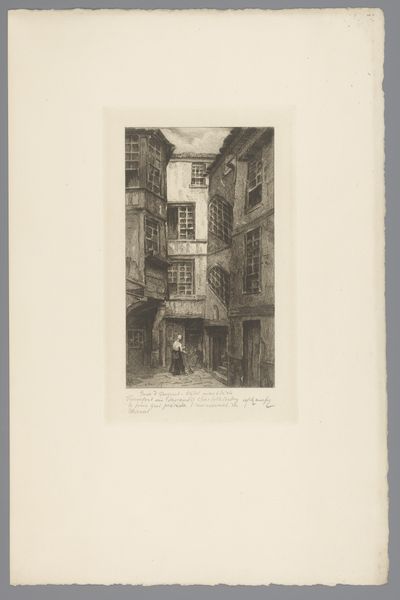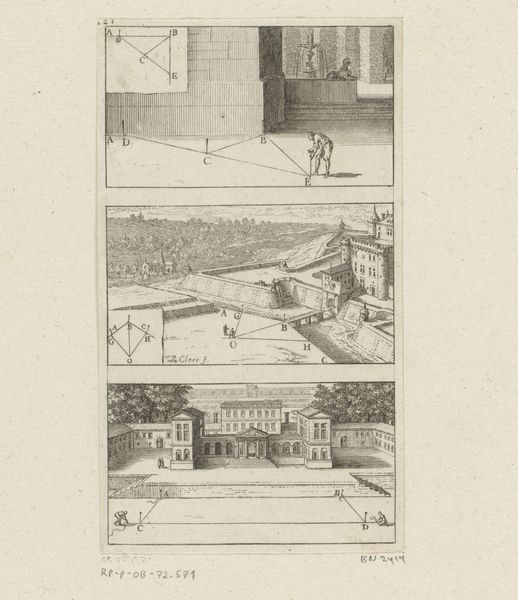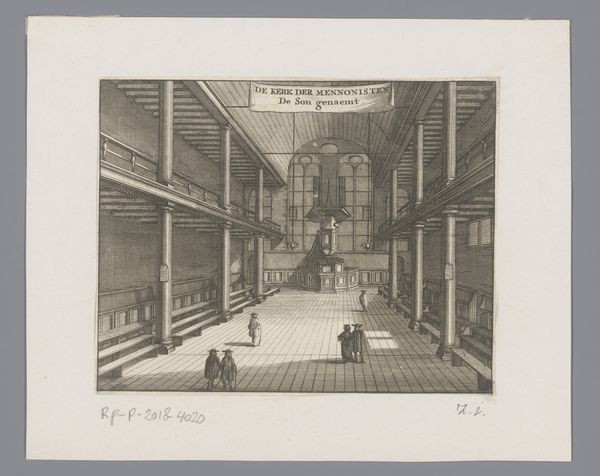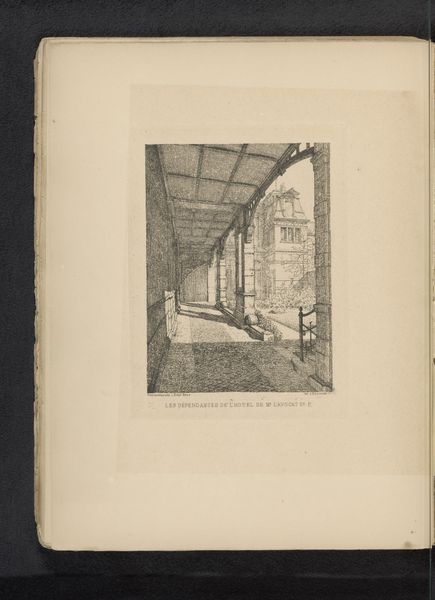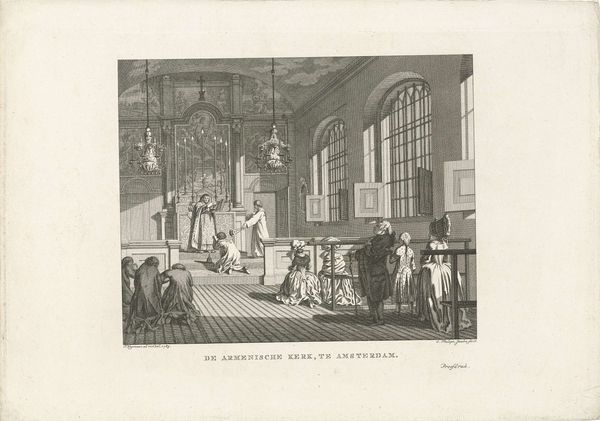
Gevangenis aan de Weteringschans te Amsterdam, 1848 1847 - 1848
0:00
0:00
drawing, print, pencil, engraving
#
drawing
#
dutch-golden-age
# print
#
pencil sketch
#
pencil
#
cityscape
#
genre-painting
#
engraving
#
realism
Dimensions: height 247 mm, width 166 mm
Copyright: Rijks Museum: Open Domain
Curator: This print by Carel Christiaan Antony Last, created around 1847-1848, depicts the Prison on the Weteringschans in Amsterdam. It's rendered through engraving and pencil. What's your immediate take? Editor: The chilling vastness! Those endless corridors stacked on top of each other... It speaks volumes about confinement and control. What strikes me is the use of architectural elements – the stark lines, the regimented cells – to embody those very themes. Curator: Precisely. This piece allows us to explore 19th-century penal systems and broader questions of power, discipline, and the social construction of criminality. How does this architectural representation reflect or challenge contemporary carceral realities and the historical roots of the prison industrial complex? Editor: Absolutely. Considering its materiality, the engraving, with its precise lines and repeatable nature, becomes almost a metaphor for the industrialization of punishment. It's about efficient processing, much like any other factory churning out a product. The contrast between the seemingly delicate rendering and the brutal subject matter creates an uneasy tension. How do we grapple with art's role in representing suffering? Curator: And what about the visitors we see in each of the two framed views? Their placement subtly underlines questions of access and privilege within these power structures. We have the surveillors and the surveyed. The implications for intersectional perspectives on race, class, and gender within that confined space become pressing, prompting crucial inquiries. Editor: I agree. Also, who is creating this image? What purpose does this rendering of incarceration serve? How might the viewer's own socio-political leanings inflect their interpretations? Curator: I think this prompts us to consider how images like this both reflect and shape the socio-political landscape, reinforcing existing power structures while also creating a space, perhaps unintentionally, for critique. The layers within, as is appropriate for such a multi-level prison structure! Editor: Right, that resonates strongly with me, recognizing that the work doesn’t simply exist as a static representation. The social context of its creation and our engagement with it today complete the art, underscoring a very tangible relationship to our world.
Comments
No comments
Be the first to comment and join the conversation on the ultimate creative platform.
